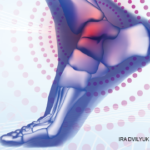“Despite the shortcomings of this study, it is generally understood that there are some benefits to the barefoot running style,” acknowledges Dr. Lee. “The question is whether the benefits come from the fact that they are running barefoot or because they have a different stride and cadence in their running style.”
The authors call for a larger scale cohort to more accurately assess the differences in injuries between the two groups. A larger study would also make it possible to perform statistical analyses on the rates of specific injuries and possibly compare runners who run a similar amount of mileage each week.
ad goes here:advert-1
ADVERTISEMENT
SCROLL TO CONTINUE
Lara C. Pullen, PhD, is a medical writer based in the Chicago area.
Reference
ad goes here:advert-2
ADVERTISEMENT
SCROLL TO CONTINUE
- Altman AR, Davis IS. Prospective comparison of running injuries between shod and barefoot runners. Br J Sports Med. 2016 Apr;50(8):476–480. doi: 10.1136/bjsports-2014-094482. Epub 2015 Jun 30.
